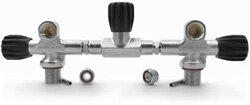Yes, just set the IP to mid-range and the secondary to "normal breathing", not "anticipates each breath"...
Actually I set the IP a bit lower then mid-range....and yes secondary to normal breathing. I find that the second usually only freezes up if it was wet on the surface (IE dont breathe it till its under the water dealy)
I like the IP a bit lower as when you start to get that cold water ip creep, it doesn't go from bad to worse right away.
ive seen apex, oceanic, zeagle, scuba pro, and hollis all free flow, Haven't seen my wifes sherwood blizzards free flow.....my try and get em to do it while the water is still at freezing haha





